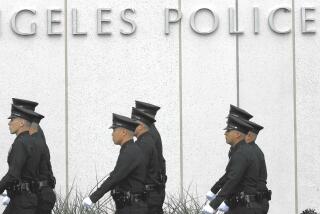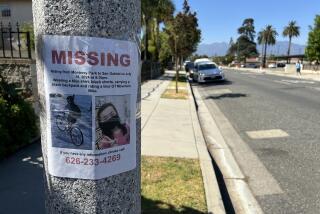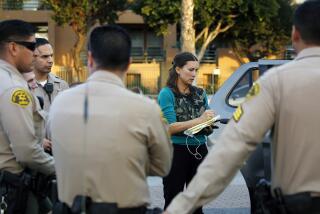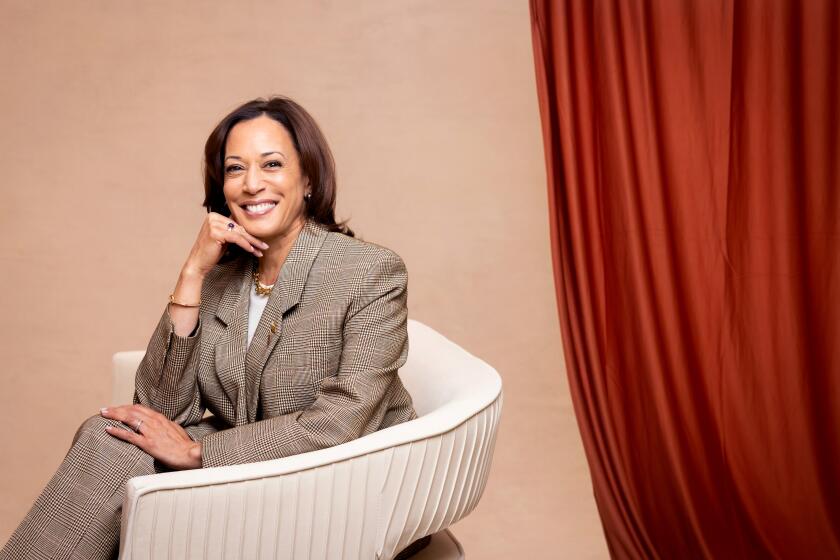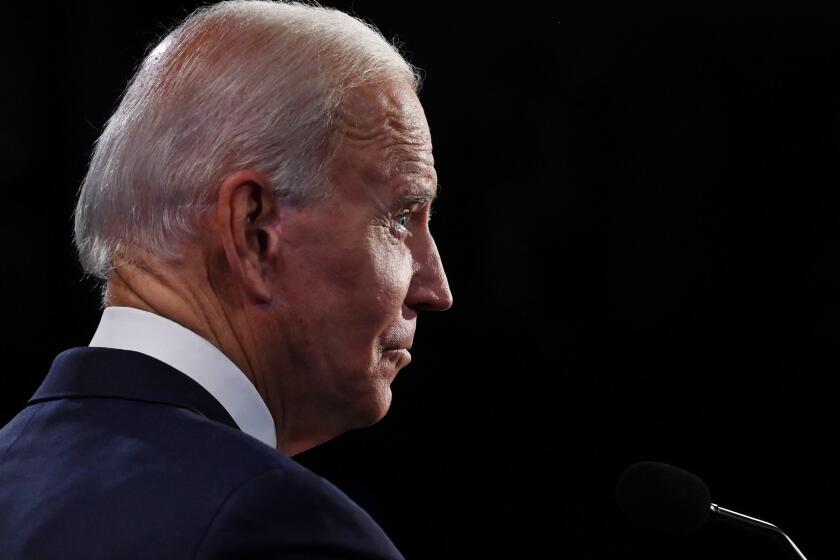Granddaughter of the Water Wizard
The meeting was in an old firehouse and it was a good thing the fire marshal didn’t come. Nearly 100 people had gathered in a room that isn’t supposed to hold more than 70. Never before had a gathering of the Canoga-Owensmouth Historical Society had such a turnout.
Up front sat members of Canoga Park High’s Class of 1940. “It feels like a reunion,” said the guest speaker, the classmate with the famous and infamous name.
Her lecture was titled “William Mulholland: Shifting Perspectives.” The way writers from Carey McWilliams to Joan Didion have interpreted the history of Los Angeles, the way the movie “Chinatown” twisted the L.A. story with intrigue and incest, Catherine Mulholland figures that if she doesn’t honor her grandpa’s memory, no one will.
She offered a memory from age 12: She is sitting with her family in the City Hall rotunda, where William Mulholland’s body lies in state. Orators describe “the fallen hero.” But what impresses young Catherine is the sight of “a tough old working stiff in a short-brim cap,” old enough to have helped her grandpa build his aqueduct.
“He stood in front of the casket and he wept. And I had never seen a grown man cry.”
*
Time hasn’t shed many tears for William Mulholland. He’s got a famous road and fountain named for him, but now he’s often cast as a heavy in what Catherine Mulholland calls “the dime-novel detective school of history-making.” It isn’t fair, she says, that her grandfather is portrayed as a lackey of early civic potentates like Los Angeles Times founder Gen. Harrison Gray Otis and his son-in-law, Harry Chandler, The Times’ second publisher. If the great San Fernando Valley “land grab” was a conspiracy, she says, her grandpa wasn’t part of it.
So many myths have grown around her grandfather that Catherine Mulholland wishes some were true. She’d even heard how he used to own all the land along Mulholland Drive. “If only,” she says with a sigh.
Educated at UC Berkeley and Columbia University, Catherine Mulholland is a vibrant, outspoken author of two books about the Valley’s past, “The Owensmouth Baby” and “Calabasas Girls.” Now working on a biography about her grandfather, she figures she’s no less biased than the writers who got grandpa’s story wrong.
It’s an epic tale. William Mulholland was a 23-year-old Irish immigrant who arrived in Los Angeles in 1876. In the pueblo of 10,000 residents, he found work as a zanjero, a Spanish term for the ditch tender who diverted water to different sections of town. He learned engineering from books and experience and rose to become water works superintendent.
By the turn of the century, it was obvious L.A.’s booming population would eclipse its indigenous water resources. Mayor Fred Eaton, Catherine Mulholland says, quietly suggested the solution was the Owens River, 250 miles to the north.
It was in the Owens Valley, not the San Fernando Valley, she says, that the conspiracy was genuine. In 1904, as Los Angeles’ population approached 200,000, William Mulholland secretly surveyed the terrain and concluded that an aqueduct was possible. Eaton, who owned a ranch in the Owens Valley, surreptitiously began securing water rights before farmers understood his true design. The secrecy enabled the city to get bargain prices and prevent a rush of speculation. In 1905, L.A. voters approved the construction of the 233-mile aqueduct.
“There it is. Take it,” Mulholland famously declared as the water cascaded down the aqueduct into Sylmar in 1913. By then, Otis and other big San Fernando Valley landowners had wisely expanded their holdings. Otis happily heralded Mulholland as “a Moses who brought water from the rocks.” Job Harriman, the socialist mayoral candidate in 1911 and fierce opponent of the anti-union Otis, sarcastically dubbed him “St. Mulholland.”
Catherine Mulholland grew up on a northwest Valley ranch--property her grandpa began acquiring in 1912, long after the aqueduct was a fait accompli. His fall from grace came in 1928 with the collapse of the St. Francis Dam, a project along the aqueduct’s route. The disaster that killed more than 400 people. Mulholland shouldered the blame.
“He was sort of like the walking dead,” Catherine says. “It crushed him.”
*
No, Catherine Mulholland insists, her grandpa wasn’t in cahoots with anybody. She blames the unionists and sympathetic writers who loathed The Times’ publishers for snaring him in their net.
What he really was, she says, was a pragmatic progressive in the tradition of Teddy Roosevelt. In an age of “robber barons,” Mulholland championed public ownership of water and power against such firms as General Electric and Westinghouse, who coveted private control of hydroelectric power.
He was a zanjero who built a city. That’s why, she says, his death made a working man weep.
More to Read
Sign up for Essential California
The most important California stories and recommendations in your inbox every morning.
You may occasionally receive promotional content from the Los Angeles Times.
